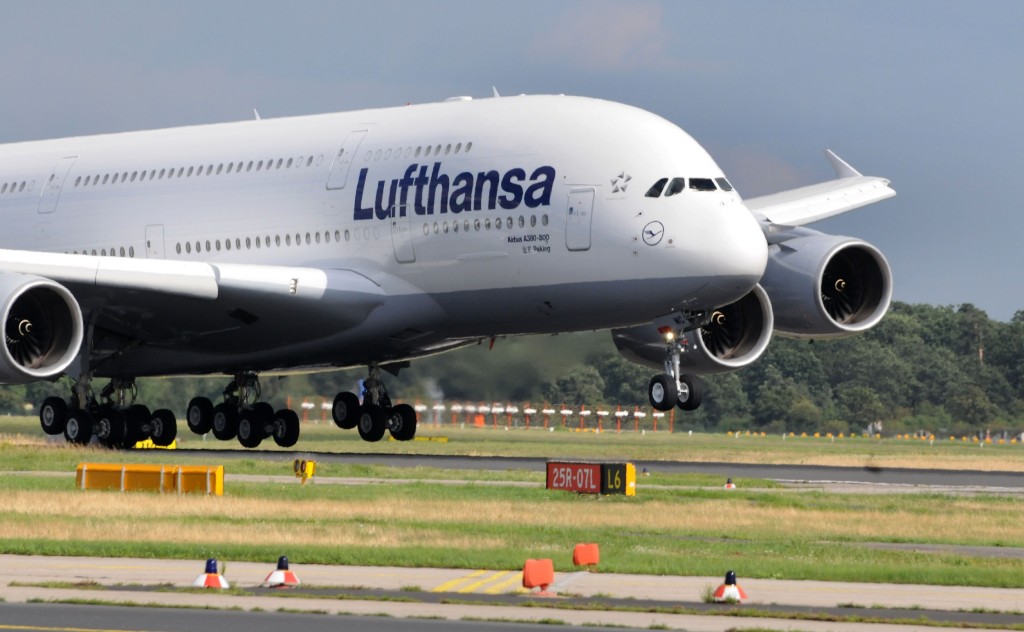Obtaining government approval for new aviation projects or initiatives in China is a complicated procedure for foreign airlines. Lufthansa’s Kay Popken, Managing Director, Strategy and Development China, and James Wu, Director of Industry Relations and Operational Affairs for Greater China, met with EURObiz’s Carl Hayward to discuss one of their current issues – getting approval to use Lufthansa’s Flynet system in Chinese airspace.
Originally established in the 1990s, Lufthansa’s liaison office in Beijing was engaged primarily in government relations, regulatory issues and lobbying before integrating its activities with the sales function for around 15 years. Last year the liaison office was reinstated indicating the growing importance of strategic communication in the increasingly complex area of aviation legislation.
Leading this strategic office, Popken and Wu have an impressive 57 combined years of experience working for Lufthansa. In their current roles they are focussed on “government relations, and basically getting all kinds of approvals that we didn’t get in the past,” says Popken.
The picture they paint is of a complicated, vague, at times frustrating, legislative environment that requires hard work and, above all, patience to understand and navigate successfully. However, it becomes clear that not devoting time and resources to keeping on top of the regulatory environment can lead to a reduction in service, and in some cases loss of revenue.
The issue of Flynet is not exclusive to Lufthansa, all major carriers are experiencing the same problem, but it appears they are leading the race in their efforts to receive the required government approval.
Currently Flynet is operating on most of Lufthansa’s long-haul routes, allowing customers to access the internet from onboard the aircraft anywhere in the world, except for China. The service has to be switched off the moment the aircraft enters Chinese airspace.
A pilot scheme for this service was originally operated from 2003 until the end of 2006, when selected aircraft were installed with hardware provided by Boeing. At this point the China Aviation Authority of China (CAAC) acknowledged the use this service and it was passed to the Ministry of Industry and Information Technology (MIIT) for full approval. However, Boeing did not follow up on this as around this time they pulled out of the project because they were losing money. The issue was shelved for a couple of years.
Around 2010 Lufthansa revisited the service and a bidding process took place to find a new hardware provider. The eventual contract was won by Panasonic, who, according to Wu, are the provider for around 60 per cent of the world’s major airlines, as well as the four major Chinese carriers – Air China, China Southern, China Eastern and Xiamen Airlines. The process of seeking government approval started again.
One of the initial stumbling blocks was trying to find the right channel to go through.
“We’ve been talking for a long time with China SATCOM (Satellite Communications Co Ltd) and also the CAAC,” says Popken. “We’ve tried talking with the MIIT…”
“But they wouldn’t face us,” Wu interjects, “so there’s nothing we can do. The CAAC is the channel we are trying to use.”
From the perspective of the CAAC this issue remains outstanding largely due to the fact that the issue had not been formally raised with them. Wu refers to their first meeting when they took the issue directly to CAAC.
“CAAC said to us, ‘You’re the first ones to approach us, no one has ever asked us before,’” says Wu. “There was a lack of clarity as to who was the actual government regulatory body dealing with this. Panasonic had said they we were doing everything for us, so we just sat there and waited.”
What Lufthansa hadn’t realised is that CAAC would not deal directly with Panasonic because they are the providers.
Lufthansa now deal directly with the CAAC to reach MIIT, and act as a conduit between the government and Panasonic. They have also now consolidated with other major carriers such as Dragon Air, Cathay Pacific, United and Turkish Airlines to present a unified ‘voice’ on this issue.
“Now when CAAC go to the MIIT and push and say that airlines need this because China is the only blank area for this service,” says Popken. “MIIT will recognise that this service is required because people are asking for it.”
Panasonic’s job, as overall network providers, is to deal with China Telecom, who were awarded the license to handle the network traffic from the satellite to the base station in China. In other parts of the world when a Lufthansa flight sends a message via the internet it is relayed directly to the base station in Germany, for flights in Chinese airspace the message will need to go via a base station in China where internet protocol filters are applied before the information goes out into the broader world.
In fact, according to Popken, the government are less concerned about what kind of content is being sent or accessed per se.
One of the chief concerns is security. The infrastructure of the Flynet system allows for mobile phone calls to be made onboard. The concern is that if this service is activated a group of individuals sitting at opposite ends of the aircraft could use it to easily coordinate a hijacking. Chinese carriers do not have this option, but foreign carriers have the choice of whether or not to switch this service on.
Wu feels this concern is born from an isolated, hypothetical situation, but adds “when people are talking about security, how can you disagree?”
Popken raises a much more tangible reason for not enabling this part of the Flynet service. “Imagine if you were on a flight and everyone was on their mobile phones at the same time. There is also product aspect to this. That’s why until now we have not allowed mobile phone calls onboard our flights,” he says. “You could be listening to more than 20 different, noisy telephone conversations at the same time, which would make for a very unpleasant flight.”
“We also don’t allow social networking and Skype on our flights for this same reason,” adds Wu.
Now the issue has been officially brought to the attention of the MIIT Popken believes they are beginning to see the light at the end of the tunnel. He feels that hopefully by the end of the year Flynet will be ready for the test phase in China, and will then be officially approved so that everyone can switch on.
| The waiting gameWaiting for approval to fly the A380 has cost Lufthansa potential revenue through missed opportunities to increase the capacity of their flights. Popken (KP) and Wu (JW) say this very long, and sometimes tedious, process involves liaising with the airports, authorities and different departments of various ministries. Lufthansa have already been through the process once to get approval for A380s flying into Beijing. This time around they are looking to fly A380s into Shanghai.KP: “When we first started the process for flying the A380 to Beijing, because we were the first ones, I think it took us two years. Now we’ve been working really hard on it – I mean we’re not talking about continuously, ten hours every day – but we’ve been after it for seven or eight months. We received verbal approval [for Shanghai] in March.“For Lufthansa it’s a capacity issue and it’s a cost issue, because you have a lower cost per average passenger on the A380, but it’s very much a product thing too. It’s a popular aircraft and people like to try it out, and those that have tried it want to fly it again. We now have people from Shanghai who travel to Beijing in order to get the A380 because they feel safe and it’s very quiet, so it’s a good product.
“The airport needs to get ready of course, and for an aircraft like this, which is bigger and heavier than everything else, you have to build special bridges and have special towing trucks. You may even have to reinforce the runways. “Quite often what happens in China is that before anybody gets an official approval, there is already somebody in a trial phase. This is what we are doing in Beijing, our COOs came over and talked to the minster or the vice minister until they eventually they said, ‘Ok, you can have one flight a week, and we’ll try out the operations and see if it is smooth.’ If it goes ok they will increase the number of weekly flights. So it’s developing step by step. “Every case is different. Not everybody has to do the same all over again but everybody has to go through the approval process.” JW: “Other airlines don’t look at what Lufthansa is doing and do the same. The government part is fixed, but they still keeping moving or changing [legislation] without your knowledge.” KP: “We applied for daily flights and in the end received five instead of seven. The argument was they might still have some hiccups so they want to have a trial phase, but until now we have no idea when we will get the daily flights instead of the five. It’s very complicated to plan our aircraft rotation because now we have to bring in a 744 for those flights on the two days when we don’t fly the A380 into Shanghai. JW: “At the moment the only thing we can say is, we don’t know what the arguments against us they have in their drawer. If there are no further arguments in their drawer then they should action this because if there is no valid reason, how can they prevent us? So we just sit and wait.” |




Recent Comments